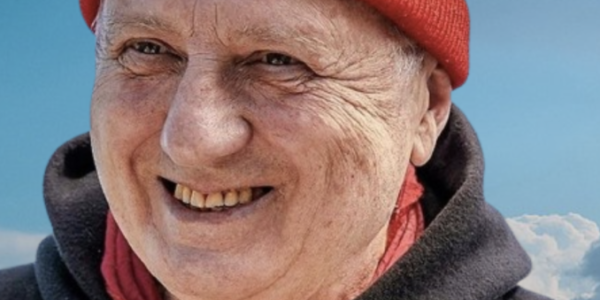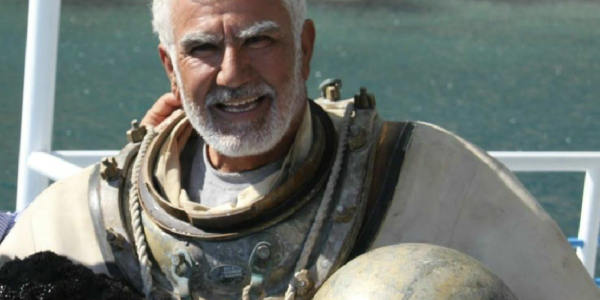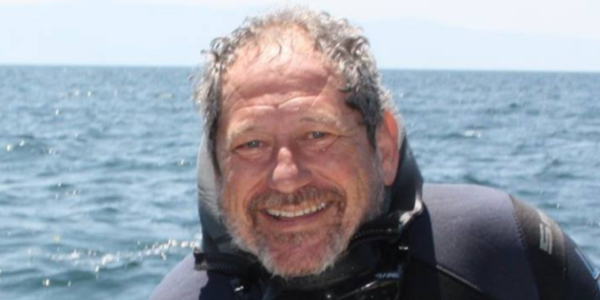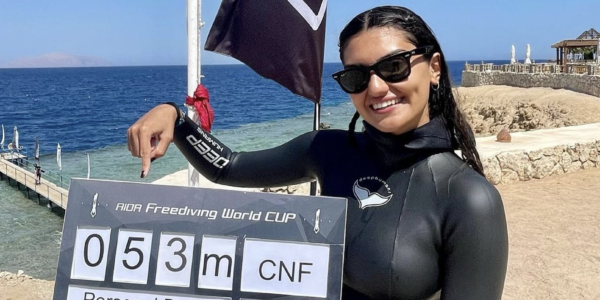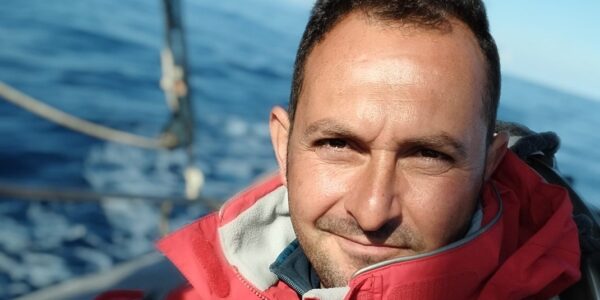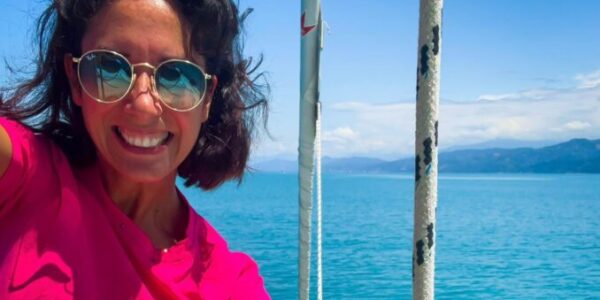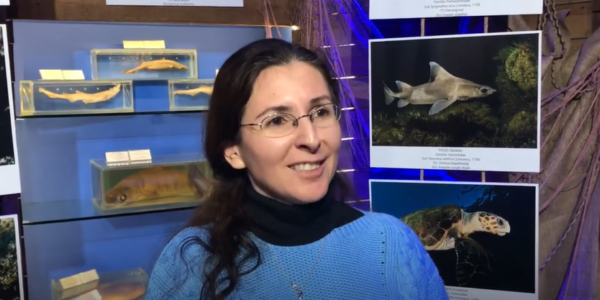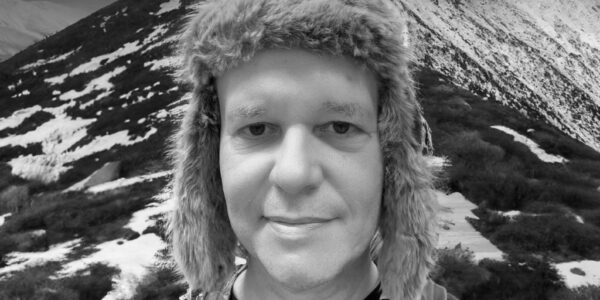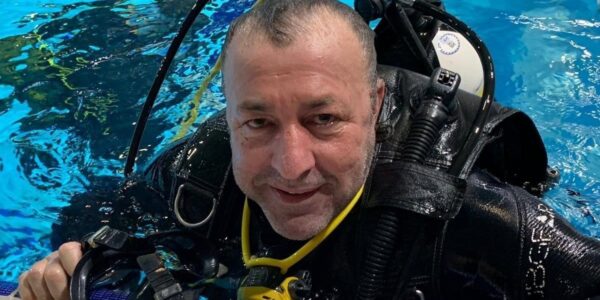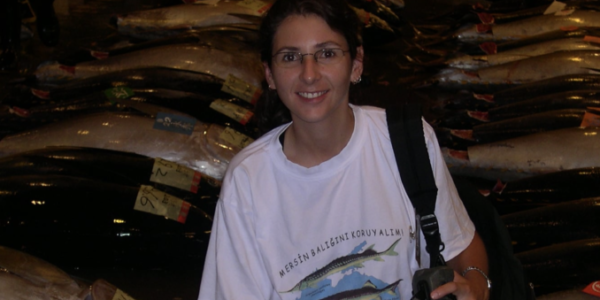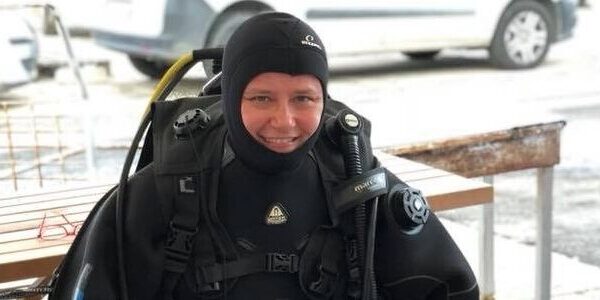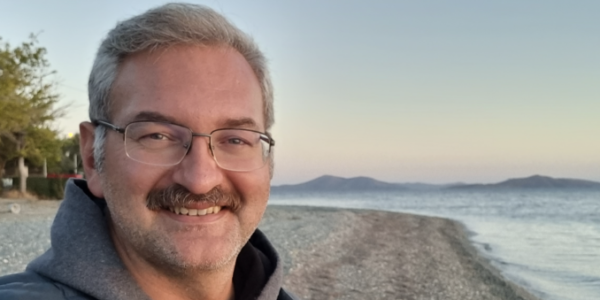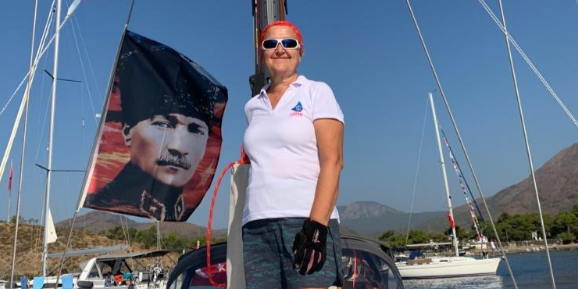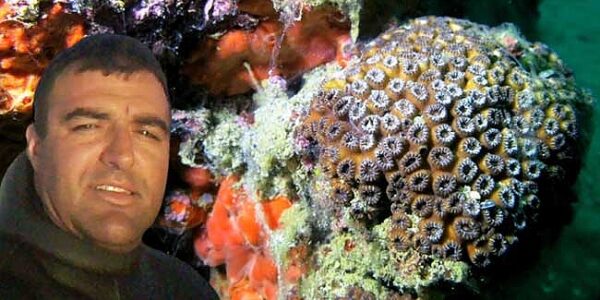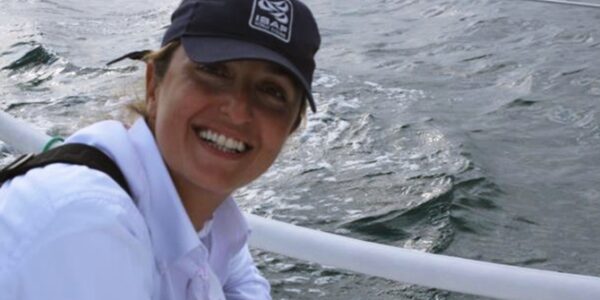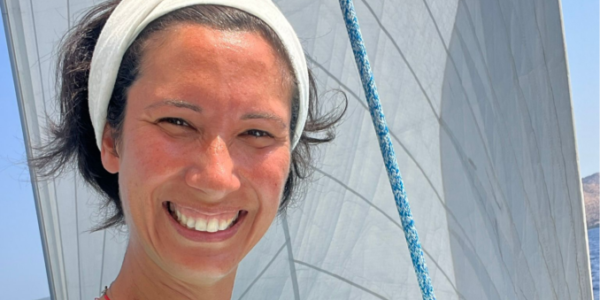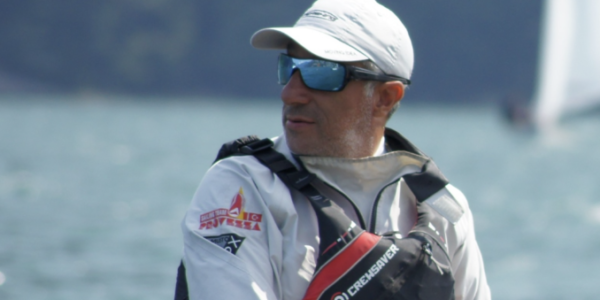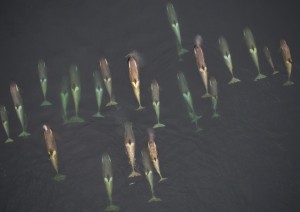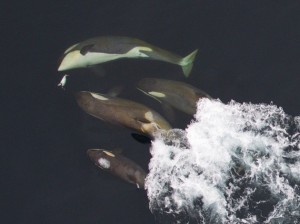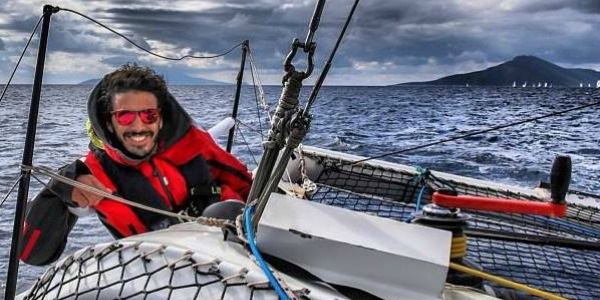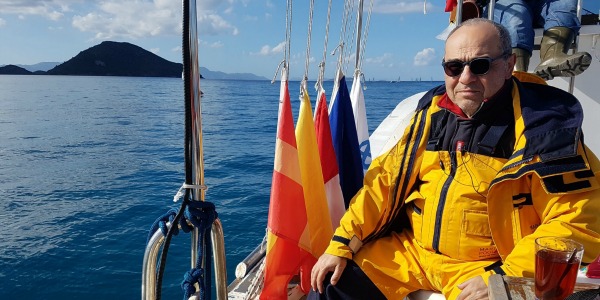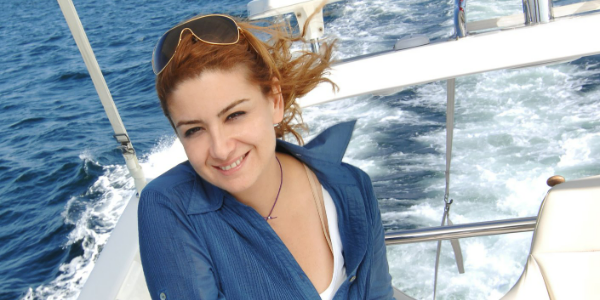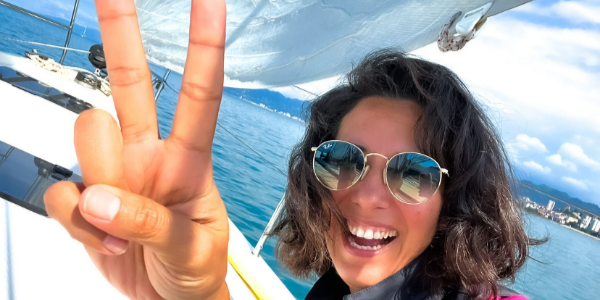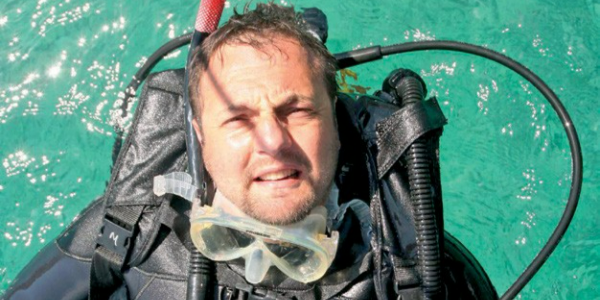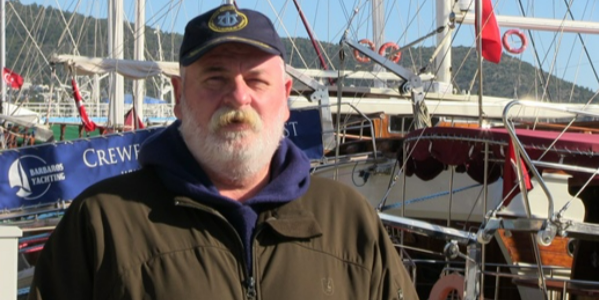The giant mammals are extremely vulnerable to changes in the ecosystem, making their health a good barometer for the state of the environment.
They stood on the top bridge of the cruise ship National Geographic Explorer, peering through binoculars at the vast icy Weddell Sea. It was a summer afternoon in February in Antarctica, the air a balmy 32-or-so degrees Fahrenheit, and John Durban and Holly Fearnbach, biologists with the U.S. National Marine Fisheries Service, had spotted killer whales in the distance.
The only question was, were these the Type B2’s, with their gorgeous gray-and-white coloring and their culinary fondness for Gentoo penguins—one of only three kinds of killer whales found in the Antarctic Peninsula? Or another type of killer whale unique to these cold deep waters? From miles away it was hard to tell. The rest of us spectators on the ship, far from our native habitats of Texas, England, and Kenya, gazed out at the ice floes and the foggy horizon splashed with blue, wondering too.
The scientists were on board thanks to a grant from the Lindblad Expeditions-National Geographic (LEX-NG) Fund. The fund aspires to protect the ocean’s last pristine areas through research, conservation, education, and community-development projects in the company’s far-flung destinations.
For Durban and Fearnbach, who are based in sunny La Jolla, California, the fund has buoyed their research in Antarctica. While they also study orca and humpback whale populations in the Pacific Northwest, the North Atlantic and Alaska, on these trips they’ve been able to observe killer whales in perhaps the most inaccessible place on the planet. Since 2011, the scientists have made several voyages a year to the frozen continent on the Explorer, using the ice-cutting, refurbished Norwegian ferry to follow the whales.
Killer whales live as long as humans do, but produce very few calves; each one’s survival is critical.
On the trip in early February, the scientists were joined by 148 passengers and a flock of naturalists. For those paying hefty sums to see Antarctica, the 10-day voyage was like a floating science classroom. In the lounge, naturalists lectured on such pertinent topics as “Know Your Penguins,” “What Does Ice Tell Us About Climate Change?” and a Belgian expedition’s epic discovery of the Gerlache Strait.
Durban and Fearnbach gave several talks about their work in Antarctica, and how the health of killer whales is a barometer of the continent’s rapidly changing environment. Their research has been especially revelatory. Until as little as 20 years ago, scientists used to believe that Antarctic killer whales were all alike. But Durban, his colleague Bob Pitman and others took small skin samples of whales, analyzed their DNA, and ended up discovering that there are five distinct types, each with its own prey preferences, hunting techniques, and habitats. Durban and his colleagues are proposing that they may be separate species. This means that each type of killer whale will adapt to climate change in different ways—some likely better than others—largely depending on their food supply.
The enormous Type A’s, which are a striking black and white, feed on minke whales and perhaps elephant seals. The B2’s, which are the smallest and most plentiful, typically frequent the Gerlache Strait, munching on gentoo and chinstrap penguins and probably fish. The B1s, which are a dazzling gray and white, dine on seals. When they hunt, the clever whales band together and literally make waves to wash seals off ice floes. “They are my favorite animals,” said Durban during their talk.
It’s not exactly easy to spot killer whales in the Antarctic seas, where the horizon can be an endless expanse of whites and grays and mesmerizing teal-blue ice sculptures. The creatures are mostly underwater, and race through the seas at a brisk 55 miles per hour. When Durban and Fearnbach do spy them, or get a tip from the sharp-eyed crew on the bridge that whales are in sight, the scientists chase after them in a Zodiac—a small, black rubber motorboat—taking photographs and collecting data. The photos help them identify individual whales and keep close track of their health from year to year. They can also pinpoint where in the vast Antarctic waters the whales are most likely to be, and how stable the various populations are. Although they already know a lot, they want to learn more about what the insatiable animals eat. That will tell them if the warming environment is threatening their food sources.
Source: The Atlantic

